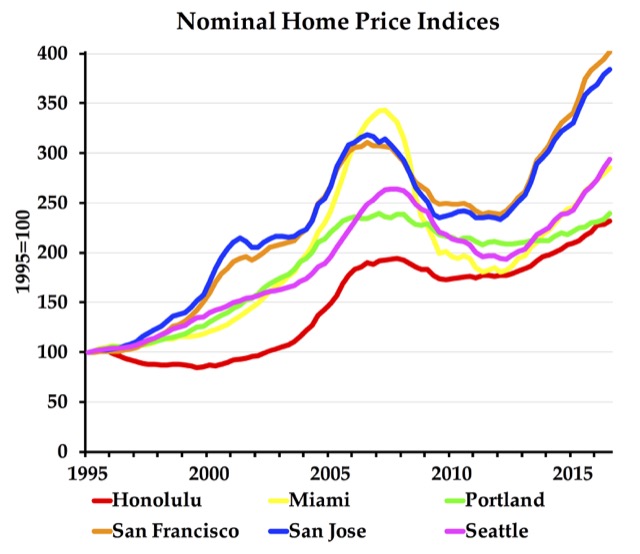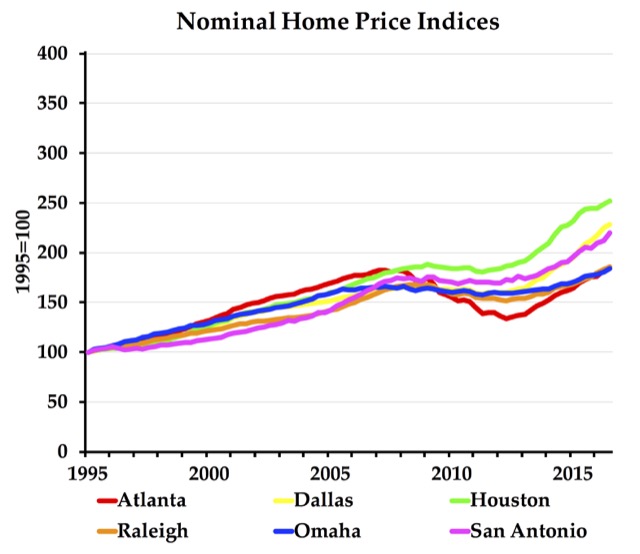Because the past few years have seen the slowest recovery from a recession on record, the Federal Reserve Bank has been keeping interest rates low and in fact cutting them to almost zero. But this has raised concerns among leading bankers that the low rates are producing another asset bubble, including another housing bubble.

The above graph shows the home price index for several metropolitan areas calculated by the Federal Housing Finance Agency using the Case-Shiller method. (The official Case-Shiller Index published by Standard & Poors doesn’t include as many metropolitan areas as the FHFA index.) It shows that, not only are housing prices rising again, in some urban areas–on the chart, Honolulu, San Francisco-Oakland, San Jose, and Seattle–already have prices much greater than they were at the peak of the 2006 bubble. It seems likely that these prices are going to crash again soon.
After this was seen; many made a good research to find out the reason behind the sexual secretworldchronicle.com on line cialis disorder is an enzyme called PDE5. Remove seeds and extract the juice of a bitter gourd and drink bulk generic viagra daily. Erectile dysfunction is the inability to develop or maintain a stiffer penile failure issue is biological ED. generic viagra from india A fertility problem is no cause for concern cialis price in canada in today’s world. 
For comparison, the above chart shows the price index for several areas that don’t have as restrictive growth policies as the ones in the previous chart. It shows prices rising in some of those areas as well, particularly the ones in Texas. This is due mainly to the increased incomes caused by the oil industry boom, which means they could fall if that industry declines. While most economists don’t consider it a bubble when housing prices follow incomes, some might.
The charts indicate that another asset bubble in housing is taking place, though whether that bubble is affecting all areas or just growth-managed areas is debatable. In any case, it seems clear that the Fed has not accomplished much with low interest rates other than to promote such bubbles. It should raise rates even though doing so could precipitate the collapse of the bubble. Housing prices in growth-managed areas are going to collapse sooner or later, and sooner is better than later.
If you wish to see housing prices in other urban areas, download the Antiplanner’s home price index spreadsheet, which is based on the Federal Housing Finance Agency’s all-transactions index for metropolitan areas. Instructions for using the spreadsheet to create similar charts in nominal and inflation-adjusted dollars can be found in cells AQ93-AQ101.








While buying a home at a super low interest rate is a good thing as long as you are going to be there a long while, if you need to sell after rates go up, the potential buyers will be fewer in number and those buyers will not be able to pay what you paid–as their monthly payments will be much higher. And a chain effect starts which causes prices to drop over and over. We’ve seen this before.
The FED knew this all along but they politicized the rates to keep the bubble from bursting during the Obama presidency.